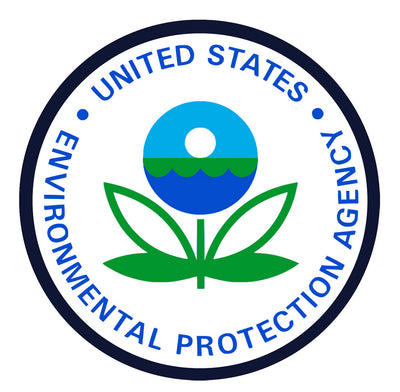Analies Dyjak | Policy Nerd
Flint, Pittsburgh, Providence, and Portland are just some of the major U.S. cities dealing with high levels of lead in drinking water. Since Pittsburgh just began adding Orthophosphate to its distribution system, we decided to put together an article explaining what exactly this treatment technique is, and other popular municipal treatment techniques used for lead mitigation.
Why Is Lead Such A Big Problem And What Are We Doing To Fix It?
The 2014 drinking water crisis in Flint, Michigan made municipalities around the country turn the mirror on their own problems with lead contamination. Lead remains a major issue for cities and towns throughout the entire country. It may feel like Americans have been talking about lead exposure for years, so why is it still such a big problem? The answer is pretty simple: Homes in the U.S. built before 1986 most likely contain lead pipes, plumbing, and solder. To make matters worse, water distribution lines also tend to adhere to this cutoff date. Lead is still a big part of infrastructure in the United States.
Since municipalities are tasked with mitigating lead exposure, we wanted to go over some popular treatment techniques that are being used throughout the United States, and their effectiveness at removing lead from drinking water.
Orthophosphate: Corrosion Inhibitor
Orthophosphate is a common system-wide corrosion inhibitor. It’s created by combining phosphoric acid with zinc phosphate and sodium phosphate. Together these chemicals create a mineral-like crust on the inside of lead service lines. If municipalities are willing to follow a strict dosing and monitoring schedule, orthophosphate can be extremely effective at reducing lead levels in drinking water.
Other larger cities around the country have also adopted Orthophosphate as a solution for lead-contaminated drinking water. In June of 2004, Washington, D.C. introduced orthophosphate to its distribution system, following major District-wide lead contamination.
According to EPA, the health effects of phosphates are not well known and FDA has stated that they’re “generally recognized as safe.” The Lead and Copper Rule requires the use of polyphosphate or orthophosphate whenever a municipality is in exceedance of lead standards set by EPA. Both have been cited as effective, but some municipalities disagree. According to city officials in Madison, Wisconsin, utility providers tried both of these additives and neither of them effectively reduced lead levels in drinking water. Because they were unable to find a corrosion inhibitor that worked, Madison officials decided to mandate the removal of all lead service lines.
It’s important to remember that orthophosphate isn’t a permanent fix, nor does it magically remove lead pipes. Orthophosphate has been cited by EPA as an “interim Optimal Corrosion Control Treatment (OCCT) modification.” It will also increase your water bill. In Washington, D.C., orthophosphate costs DC Water customers approximately $700,000 annually.
Problems With Partial Lead Service Line Replacements
Partial service line replacements are another mitigation tool used to reduce lead exposure. To put it candidly: it's extremely invasive. People are often surprised to learn that lead levels actually increase in the months following a partial service line replacement. Water that comes in contact with lead-laden debris or freshly uncovered piping can easily become contaminated. This type of disruption negates any sort of expensive treatment being used by a utility provider, like orthophosphate. If a municipality is in exceedance with the 15 part per billion Action Level, they are mandated (under the Lead and Copper Rule) to replace a certain percentage of lead service lines every year. If you’re curious municipal requirements under the Lead and Copper Rule, click here!
Who Pays For Lead Line Replacements?
Ratepayers are typically responsible for paying for public water line replacements. However, homeowners are responsible for covering the cost of replacing lead service lines that distribute water directly into their homes. According to EPA, a homeowner that elects to do so can expect to pay anywhere from $2,500 to $8,000 per line. This is not feasible for most households in the United States. Additionally, people are still at risk of lead exposure because lead pipes may still exist at various locations throughout a distribution system. Some municipalities offer subsidies or rebates on private lead service line replacements, but not all. In Madison, Wisconsin for example, homeowners who are eligible can apply for a rebate which covers up to $1,500 of the line replacement.
Can pH Reduce Lead In Drinking Water?
Many municipalities believe that adjusting the pH of drinking water is the best way to reduce lead exposure, and here’s why: Acidic water increase corrosivity, which causes lead pipes to leach into drinking water. The idea is that by making water more alkaline (opposite direction on the pH scale), the corrosivity will decrease. This may sound good in theory, but a municipality must still correct for chloride when doing so. According to the World Health Organization, chloride “increases the electrical conductivity of water and thus increases its corrosivity” and “increases the rate of pitting corrosion of metal pipes.” Similar to the other treatments mentioned in this article, changing the pH of drinking water does not get rid of lead service lines. Additionally, maintaining a balanced pH throughout an entire distribution system is not an easy task.
How Do You Know If Lead Treatment Works?
Lead is different from other contaminants because problems arise at the tap, rather than the source water. The only way to truly know if a corrosion control method is working is to test every single tap (which is completely unfeasible). Under the Lead and Copper Rule, most municipalities are only required to test 50-100 homes every 3 years or every monitoring period. This is not nearly enough data for a larger municipality like New York City. There’s just no way to know if a system-wide treatment technique is working to the best of its ability, so the burden and responsibility is on the consumer.
Other Articles We Think You Might Enjoy:Lead: What You Need To Know
Orthophosphate and Lead Contamination
Why Are So Many Schools Testing Positive For Lead?







